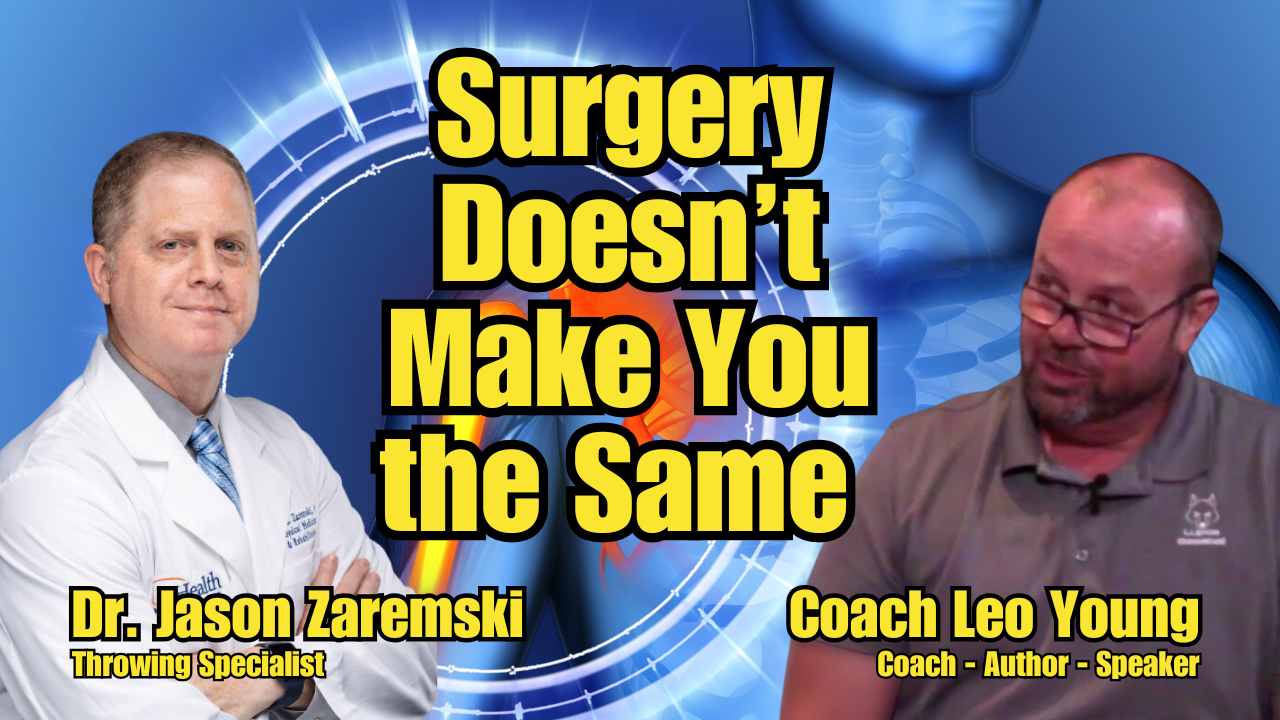Speed Has a Price—And Surgery Doesn’t Reset You to 100%
Most athletes believe that surgery will get them back to where they were—but that’s not reality. In this Sore to Soaring Podcast episode, Coach Leo Young and Dr. Jason Zaremski (UF Health Sports Medicine) talk candidly about the physical and emotional toll of shoulder and elbow injuries, and why “coming back like new” is often a myth that sets players up for frustration and disappointment. Speed Has a Price—And Surgery Doesn’t Reset You to 100% Velocity might get you noticed, but the consequences don’t always show up right away. When the arm breaks down and surgery becomes the only option, most athletes assume they’ll just bounce back. Coach Leo Young and Dr. Jason Zaremski, MD, say it straight: you won’t be the same. The throw might still happen, but it won’t feel the same—and mentally, it’s a whole new game.
INJURY PREVENTION & PERFORMANCE BUILDING STRONGER ATHLETES
Coach Leo Young
6/4/20252 min read


The Surgery Myth
“I’ve had surgery on my shoulder,” Coach Leo shares. “I can still throw, but it’s different. I warm up differently. I can’t lift the same. Something changed. And that Superman feeling—like you’re invincible—that’s gone.”
Young athletes don’t always grasp this. At 15, 16, or 17, many think, “No big deal. I’ll get surgery and be back to 100%.”
But in most cases, the return is subtle, slower, and full of frustration. What was natural now feels foreign. Mechanics shift. Confidence gets shaky. The game becomes mental.
Do you think most players understand that surgery won’t make them exactly the same? Or is the comeback myth still too strong? Drop your thoughts in the video comments.
Rehab Is a Different Battle
“The rehab is brutal,” Coach Leo says. “Not just physically, but mentally. You start questioning everything. And even when you come back, you know deep down—something’s different.”
That reality hits hard for athletes who’ve never faced a setback. Suddenly, they’re not the stallion anymore. They feel mortal.
The mental shift from dominant to doubtful is what many struggle with most—and it doesn’t show up on a box score.
Don’t Mistake Science for Safety
Modern velocity programs are biomechanically sound. The science behind them is solid.
But just because something is possible doesn’t mean it’s safe.
“The biomechanics might be right,” says Coach Leo, “but there’s still a toll to pay. Always.”
And if that toll turns into surgery, it’s not just a procedure—it’s a turning point in an athlete’s identity and long-term potential.
Key Takeaways for Parents and Players
✅ Surgery doesn’t restore you to your pre-injury baseline—it alters your baseline
✅ Most young athletes underestimate the mental toll of injury and rehab
✅ Rehab changes mechanics, confidence, and warm-up routines
✅ The “Superman” mentality disappears after surgery—athletes must learn to adjust
✅ The better path is prevention—not recovery
How Sore to Soaring Teaches Smart Velocity Development
At Sore to Soaring, we teach athletes that velocity is earned—not forced. We believe in building arm strength and speed with smart, progressive programming—not reckless output. And we don’t sugarcoat injury realities.
Because when you know the truth, you can make better choices. Our goal is to help athletes stay healthy long enough to reach their full potential—without having to rebuild it after surgery.
Support our work at: www.SoreToSoaring.org
Disclaimer
The views shared in this article are for informational purposes only and do not represent an endorsement by Lupos Initiative Inc., DBA Sore to Soaring. Always consult a qualified professional before implementing any training, recovery, or medical plan. No affiliation or compensation exists between Sore to Soaring and any for-profit entity mentioned.
To learn more about Dr. Jason Zaremski and UF Health Sports Medicine, visit:
https://ufhealth.org
Hashtags
#TommyJohnRecovery #ThrowingInjuries #YouthBaseballInjuries
#SoreToSoaring #SmartVelocityTraining #PitchingHealth
#BaseballRecovery #ArmCare #BaseballSurgeryReality
#TrainToLast #ThrowingInjuryPrevention

